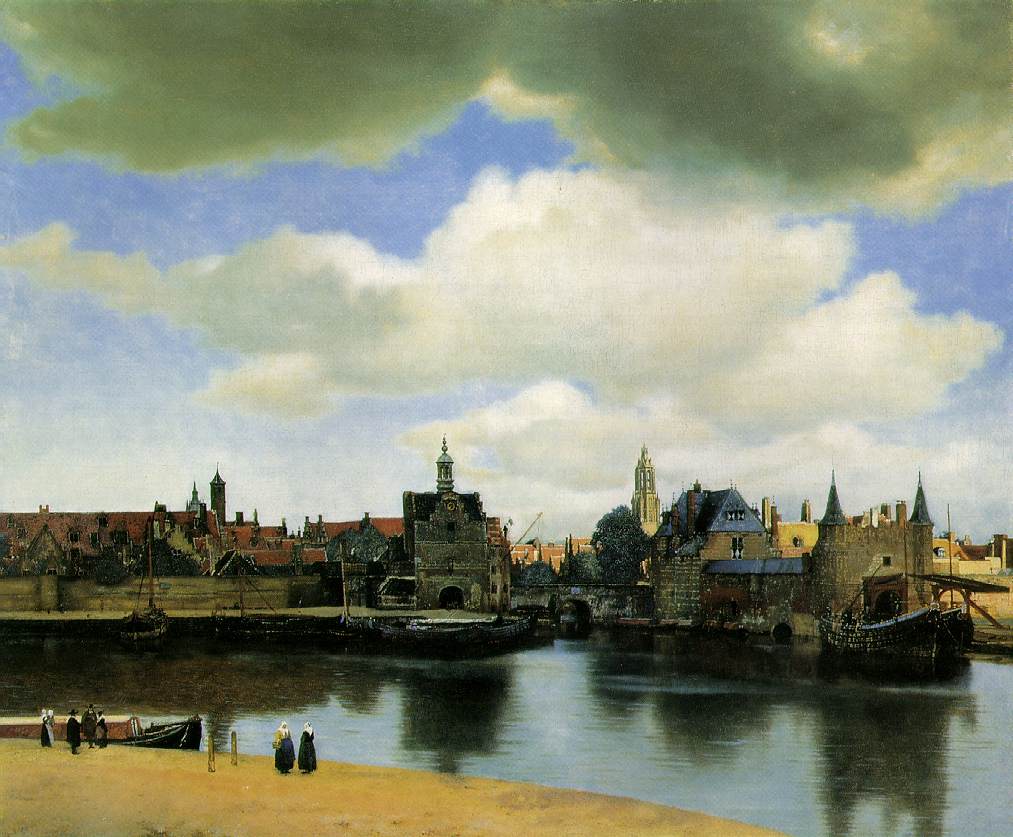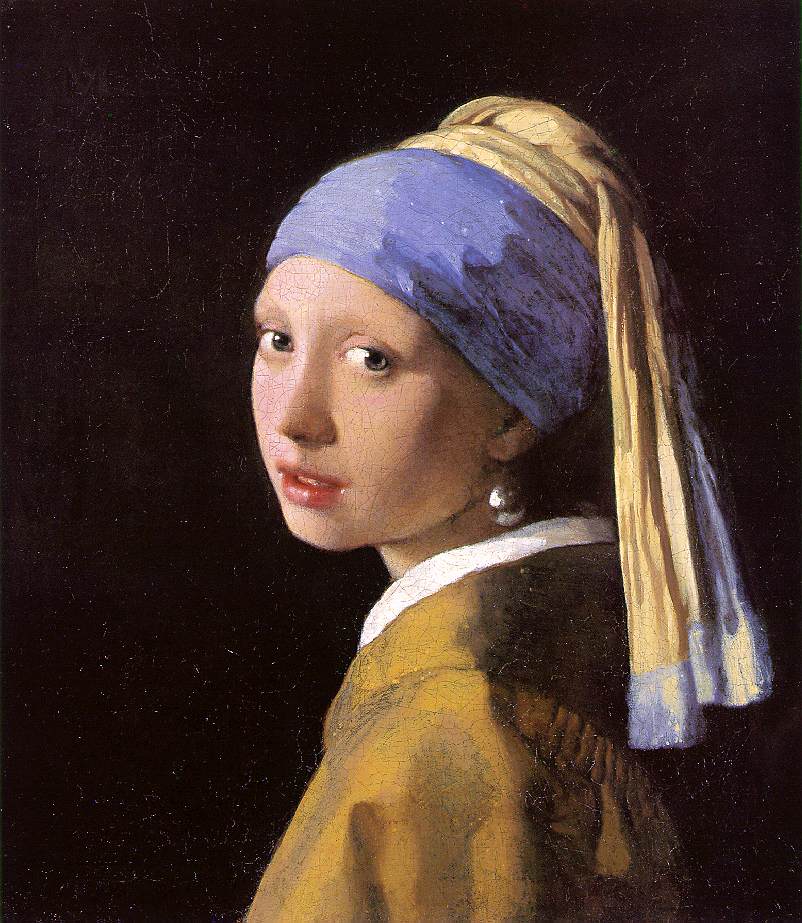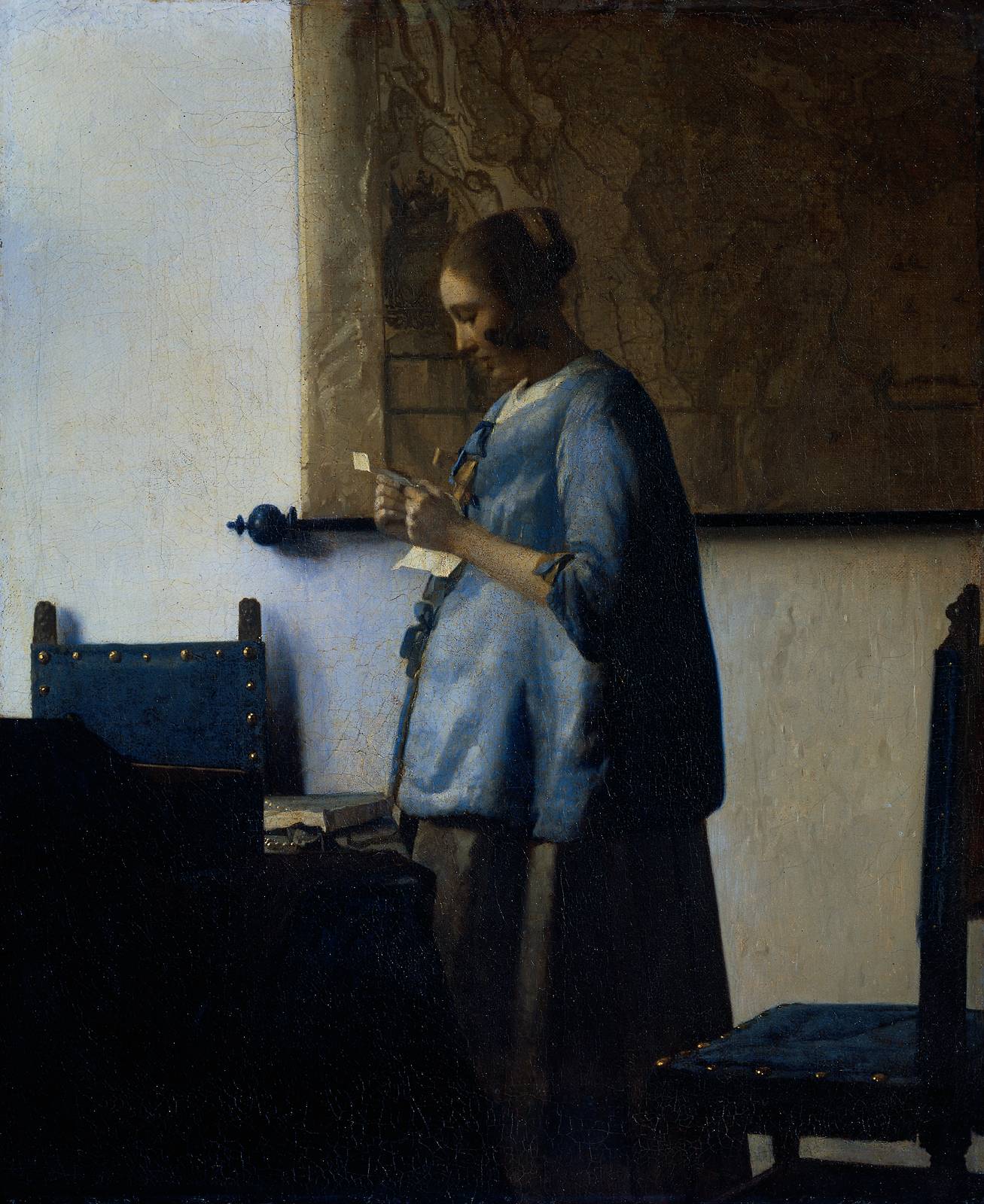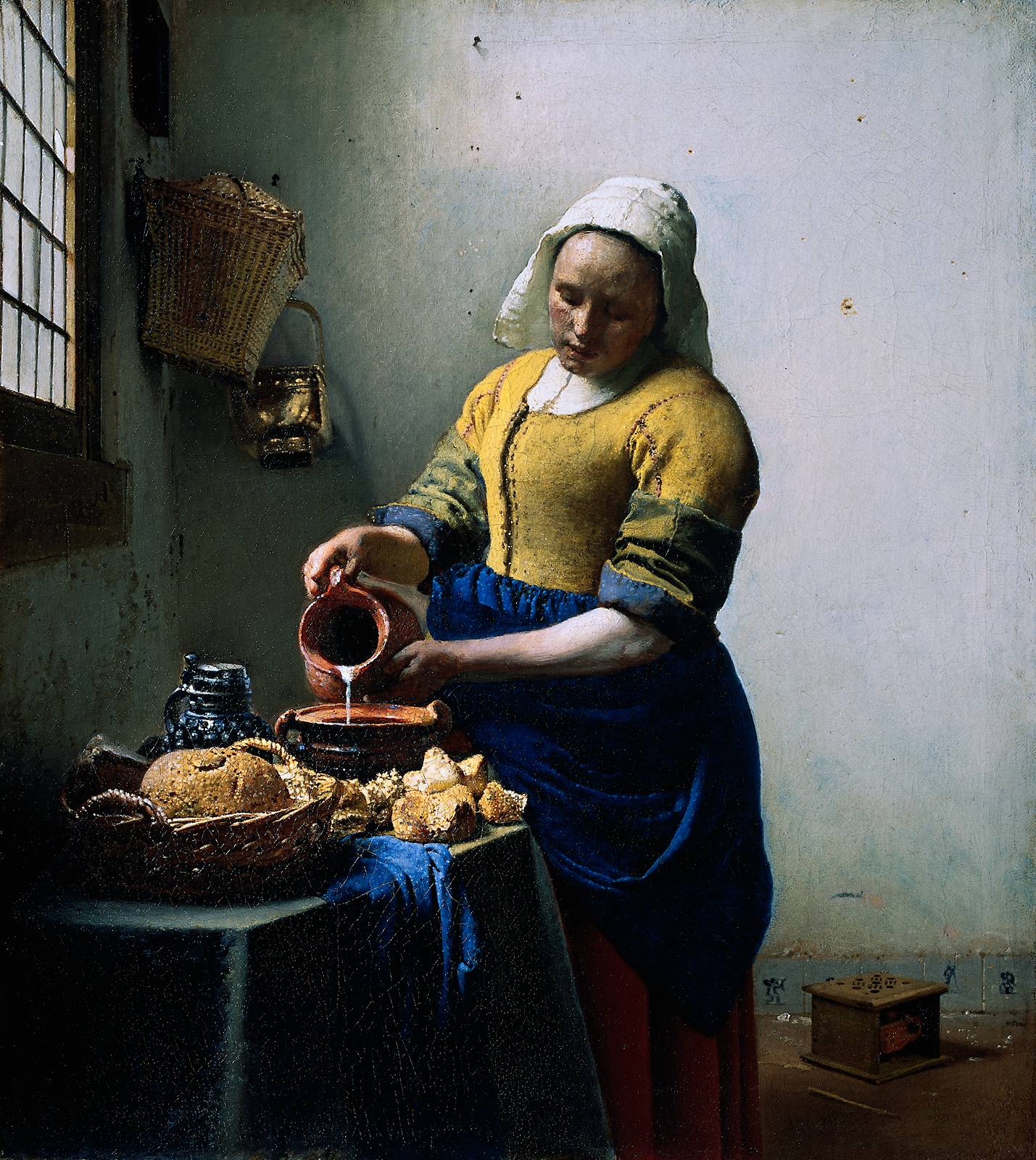Wednesday, April 04, 2007
Johannes Vermeer

The Little Street, 1658
The detail on this painting is absolutely amazing. Every brick is different--there is no stylizing here. The next painting also has an astounding attention to detail:

View of Delft, 1660-61
Here, all of the buildings are executed with a high degree of precision. The play of light is remarkable as well. Even if he had not included the cloudy skies hinting at a storm, we could easily guess because of the lighting on the buildings and the water.
However, Vermeer's most famous painting is probably this one:

Girl with a Pearl Earring, 1665-66
While this painting has become well-known recently because of the movie of the same name, its aesthetic qualities should not be overlooked. The face is very delicately crafted--we can immediately discern that she has soft smooth skin, moist lips and shining eyes. The cloth is also well-done. The fabric wrapped around her head seems to be stiff--the creases are harsher than those on her dress. The light on the shiny pearl is similar to that on the brass bucket in The Kitchenmaid. However, this painting is different from most of Vermeer's other works in that the background is solid black. In most of Vermeer's interior scenes, he takes great care to make the background fit the subject, such as in The Kitchenmaid. Here is another painting that Vermeer makes great use of the background:

Woman in Blue Reading a Letter, 1662-63
In this painting, an expectant mother is reading a letter by a window. We can assume that the letter is from her husband--the father of her child. The map on the wall suggests that her husband has traveled abroad.
I hope you all now have a great appreciation of this fine artist.
4 Comments:
Blessings, Mrs. J
And I think you should transfer to IU. I got bored, so I happened to look and there is a graphic design program for Sara, and I'm sure most of your classes, if not all of them, would transfer :)



